- News
- Reviews
- Bikes
- Accessories
- Accessories - misc
- Computer mounts
- Bags
- Bar ends
- Bike bags & cases
- Bottle cages
- Bottles
- Cameras
- Car racks
- Child seats
- Computers
- Glasses
- GPS units
- Helmets
- Lights - front
- Lights - rear
- Lights - sets
- Locks
- Mirrors
- Mudguards
- Racks
- Pumps & CO2 inflators
- Puncture kits
- Reflectives
- Smart watches
- Stands and racks
- Trailers
- Clothing
- Components
- Bar tape & grips
- Bottom brackets
- Brake & gear cables
- Brake & STI levers
- Brake pads & spares
- Brakes
- Cassettes & freewheels
- Chains
- Chainsets & chainrings
- Derailleurs - front
- Derailleurs - rear
- Forks
- Gear levers & shifters
- Groupsets
- Handlebars & extensions
- Headsets
- Hubs
- Inner tubes
- Pedals
- Quick releases & skewers
- Saddles
- Seatposts
- Stems
- Wheels
- Tyres
- Health, fitness and nutrition
- Tools and workshop
- Miscellaneous
- Cross country mountain bikes
- Tubeless valves
- Buyers Guides
- Features
- Forum
- Recommends
- Podcast
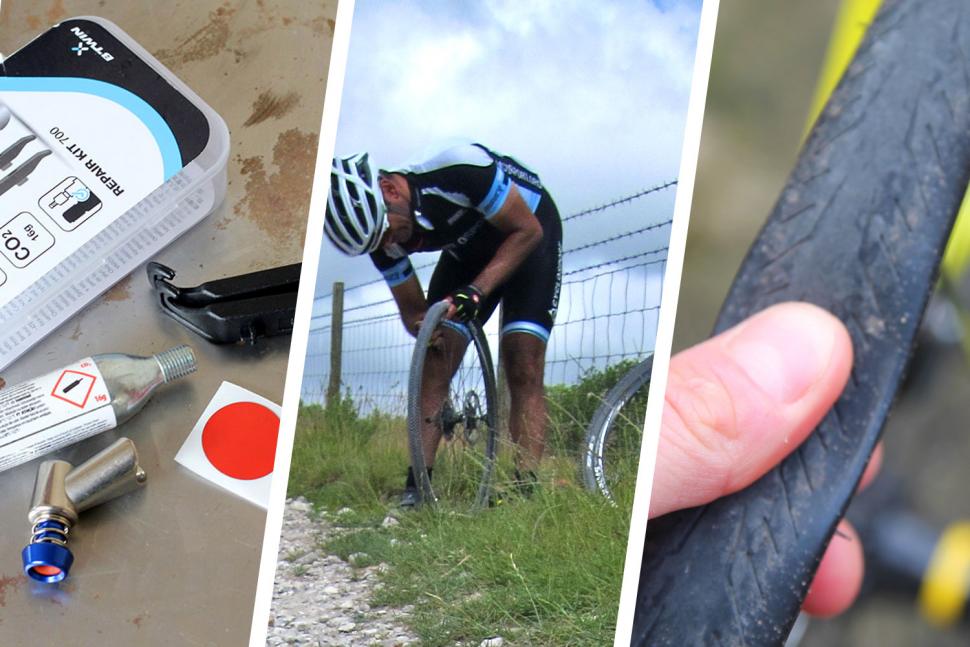 puncture
puncturePuncture prevention 101: learn how to swerve flats with these 11 top tricks
There's nothing much worse than a puncture to ruin a bike ride, whether it's commuting to work in the rain or a leisurely Sunday ride in the hills. Is it possible to completely avoid punctures? In truth, not really, but there are some things you can do to try and minimise the opportunity for a flat tyre to ruin a bike ride. Here are some tips from the road.cc staff.
Puncture resistant tyres
Not all bicycle tyres are created equal. Some are designed to be light and fast, some are designed to resist punctures and be durable. Whether you’re riding a carbon race bike or a commuting bike, fitting a pair of tyres with some sort of puncture protection can be a really good step towards minimising your chances of getting a flat.
- road.cc People's Choice: Your favourite cycling tyres revealed
Puncture resistant tyres are manufactured with materials designed to prevent the penetration of sharp objects, like glass or flint, from slicing through the tyre rubber and reaching the inner tyre. A layer of Kevlar or similar tough material is added to light road bike tyres, and when weight is less of a concern (such as for commuting and touring) an extra layer of rubber is added under the tread.
Puncture resistant tyres will carry a bit of a weight penalty, but if you want to avoid flats, it’s a small price to pay.
Tubeless tyres
The reason you get a puncture is the inner tube being pierced by a sharp object cutting through the tyre, like a nail, thorn or piece of glass. Remove the inner tube and there’s nothing to puncture. Better still, replace the inner tube with dedicated sealant, which can plug smaller holes, and you can virtually eliminate flat tyres. Cars and most motorbikes use tubeless tyres (without sealant) and it's becoming more popular in the road bike world.
- Road tubeless: everything you need to know
Going tubeless can involve a bit more of an upfront investment. You need tubeless compatible rims and tyres, but increasingly new road bikes are coming with tubeless-ready rims, so you might just be a tyre upgrade away from going tubeless. With special valves and a bottle of sealant and a bit of know-how (read this guide) you can ditch the inner tubes for good.
We’re big fans of tubeless here at road.cc - numerous members of the team have done entire winters without any flats riding tubeless.
- Guide: How to fit tubeless tyres
Change your inner tubes
Inner tubes can vary a lot, from super light latex inner tubes to chunky butyl inner tubes. Butyl tubes are more common, but they’re not all made the same. Regular ones commonly use 1mm thick rubber, but super light versions can reduce the rubber thickness down to 0.6mm, but along with the reduced weight comes an increased risk of puncturing.
- Buyer's guide to inner tubes — how to save weight, ride faster or prevent flats with new tubes
Some people claim that latex inner tubes can actually prevent punctures because the material can deform around a sharp object.
“The latex stretches and deforms around the body which is trying to penetrate the tube instead of it trying to resist the body and shortly after being punctured through,” says tyre manufacturer Challenge. “The highly elastic latex material is much more difficult to puncture.”
Latex tubes lose air pressure and need regular topping up, though, and while they are much lighter than butyl tubes, they're more expensive, and there’s no guarantee they’ll prevent a flat. For everyday riding, you probably don’t want fewer punctures to come at the expense of daily inflation.
Another option is to use inner tubes filled with sealant. The liquid contains small rubber particles that dries on exposure to air. It works a bit like a tubeless setup, but the inner tube is filled with the sealant, so easier to fit and less mess involved. There is a weight penalty though. There are some aftermarket products like Slime (tested here) but if you have inner tubes with removable inner cores, you can add sealant to regular tyres.
This solution does add weight to the entire wheel but if eliminating punctures is your key priority, it might be the right solution for you. It would be a good step for daily commuting and touring bikes, where weight isn’t such a high concern. Partner with puncture resistant tyres and you have a pretty good puncture prevention setup.
Solid tyres
What if you remove the air cavity in a conventional pneumatic tyre setup completely? Some companies have dabbled with solid tyres in the past, with varying levels of success, and so far they’ve not really offered a serious rival to the performance and cost of regular tyres and inner tubes.
Tannus is one company that is investing in the technology, and we have been impressed with its most recent tyre which offers a surprisingly good ride performance. Fitting is more complicated than regular tyres and makes tubeless look a doddle. But there’s no way of puncturing a solid tyre, so for a commuting bike, a solid tyre offers some advantages.
Pump up your tyres
It’s worth checking the pressure in your tyres. Are you running your tyres too soft? A very soft tyre is more likely to puncture when riding over a rough road and it’s possible to pinch the inner tube between the tyre and rim if you hit a pothole with sufficient force. In mountain biking, this is called a “snake bite” because inspection of the inner tube will reveal two neat holes either side of the inner tube.
The maximum* tyre pressure will be printed on the side wall of the tyre - if you pump them up to that you'll at least know they are not too soft. Having a pump with a pressure gauge is any easy way to ensure the tyres are suitably inflated. Pressure gauges are pretty cheap and a good investment if you do a lot of riding, and removes the guesswork.
(*Not to be confused with the optimum or recommended tyre pressure - sometimes the max tyre pressure and the recommended pressure - the pressure at which the tyre performs best - are the same thing, but often they're not. In terms of a road tyre you won't go far wrong if you pump them up to 100psi and you can easily go 10psi less with a tubeless tyre… That's the potted version, in truth the subject of optimum tyre pressures is a whole other feature.)
If you don’t have a pressure gauge, press the tyre firmly with two thumbs.You can tell pretty easily if it feels too soft by how much you’re able to deform the tyre.
Check for worn tyres
When’s the last time you checked your tyres? A worn tyre is more likely to puncture because there’s less rubber tread on the tyre. Some tyres have wear indicators (small holes) so check these regularly, especially if you do a lot of miles every week, to ensure you’re not riding with worn out tyres.
It’s also worth checking regularly for flint and glass embedded in the tyre. There are two schools of thought on whether you should leave or remove any objects in the tyre. Some say once an object its embedded in the tyre, it’s unlikely to puncture the tube, but some people say you’re just playing the waiting game until it bites the inner tube.
We prefer to remove any we find. Use a pair of tweezers to remove any objects embedded in the tyre and discard in the bin. If any big holes are left vacant, get some superglue and carefully fill the hole.
Pick your line
Avoid riding over gravel or other debris on the road and definitely avoid riding over broken glass. Also, avoid riding through puddles where possible in case they hide potholes. Don’t ride in the gutter of the road as this is where much of the debris lurks that could puncture a tyre as passing cars tend to push all the gravel, grit, flint and thorns out to the edge of the road.
Don’t ride in the rain
You might notice you get more flats in the rain. This is because rain acts as a lubricant and helps flint and glass to slice through the rubber of a tyre. You also tend to find that debris from the gutter of the road and the hedgerows gets washed out into the bit of the road you tend to cycle along.
It's that combination of rain and debris in the road that is the reason you tend to get more punctures in the winter.
- Buyers guide: The best tyres to keep you cycling through winter
Don’t leave the house
We’re joking. Well, half-joking. I know somebody who managed to get a puncture on the turbo trainer (no idea how) so even in the safety of your own living room, you’re never far from a puncture.
Never mention the P word
Never ever mention the word puncture if you’re about to set off on a ride, or during a ride. Don’t joke about how you’ve not had a puncture in months because next thing you know you’ll be stood by the side of the road fixing a flat. Best just to avoid all talk of punctures and instead talk about the weather or something.
Be prepared for a puncture
While you can take some prevention against a flat tyre, it pays to be prepared and always take one or two spare inner tubes and a decent pump with you on a ride. You might want to consider a couple of inner tube patches as well, especially for longer rides in bad weather. A small saddle bag can easily be stuffed with enough spares to get you out of a spot of bother and not add much weight to the bike.
Got any good tips you use to avoid punctures?
David worked on the road.cc tech team from 2012-2020. Previously he was editor of Bikemagic.com and before that staff writer at RCUK. He's a seasoned cyclist of all disciplines, from road to mountain biking, touring to cyclo-cross, he only wishes he had time to ride them all. He's mildly competitive, though he'll never admit it, and is a frequent road racer but is too lazy to do really well. He currently resides in the Cotswolds, and you can now find him over on his own YouTube channel David Arthur - Just Ride Bikes.
Latest Comments
- Mr Blackbird 3 sec ago
One of my recent employers was enlightened in these matters. There were showers and bike parking. They promoted a good work /life balance culture....
- SaveTheWail 27 min 1 sec ago
'A group of parents have said their children's school run is becoming increasingly dangerous because of a "nightmare" zebra crossing.' It's the...
- chrisonabike 40 min 16 sec ago
Shurely this is just the "emotion" version of "Strava or it didn't happen"?...
- chrisonabike 49 min 54 sec ago
And other counties also have done this IIRC with total cost/ benefit - including contribution to businesses and shopping - with similar results. (I...
- DrG82 1 hour 12 min ago
In what way? Suspension on this type of bike or one a single leg?
- chrisonabike 1 hour 15 min ago
You can have a portable mini-carillon for not too much effort.
- froze 4 hours 30 min ago
I pray Wiggins has found peace and happiness; he was a great cyclist, no one can take that away from him. And a huge thanks to Lance Armstrong for...
- Laz 4 hours 37 min ago
geeze....but a carbon fork, huh ? they should provide a rim brake option for us oldtimers who have matured to having more disposable income than...
- lonpfrb 10 hours 17 min ago
It's easy to remove the pipe from the fasteners which are C shaped so able to hold but not trap the pipe. Filtering through traffic is then...
- wtjs 10 hours 35 min ago
What was on offer only 2 weeks ago was either 'world' for £20 or tiny areas such as 'Blackpool area' for £5 each or something. You couldn't just...

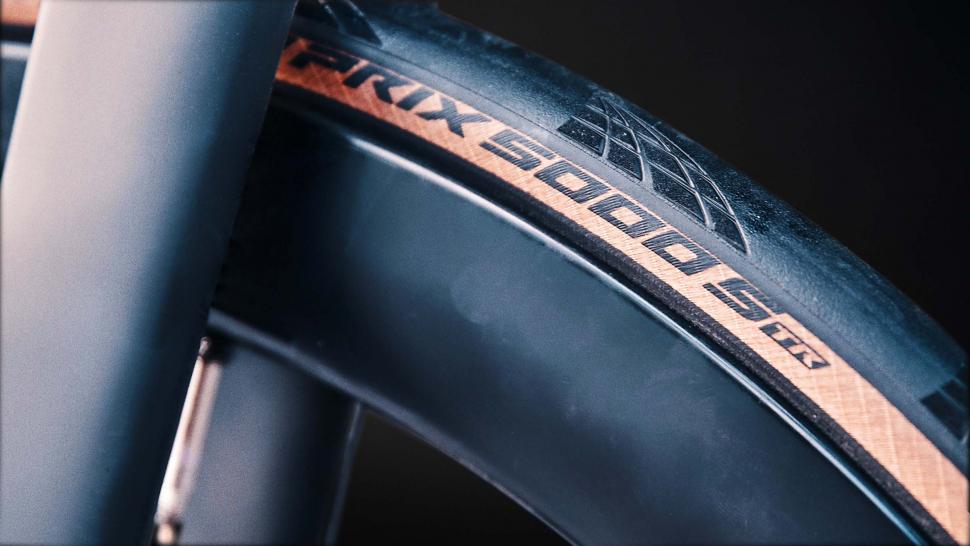

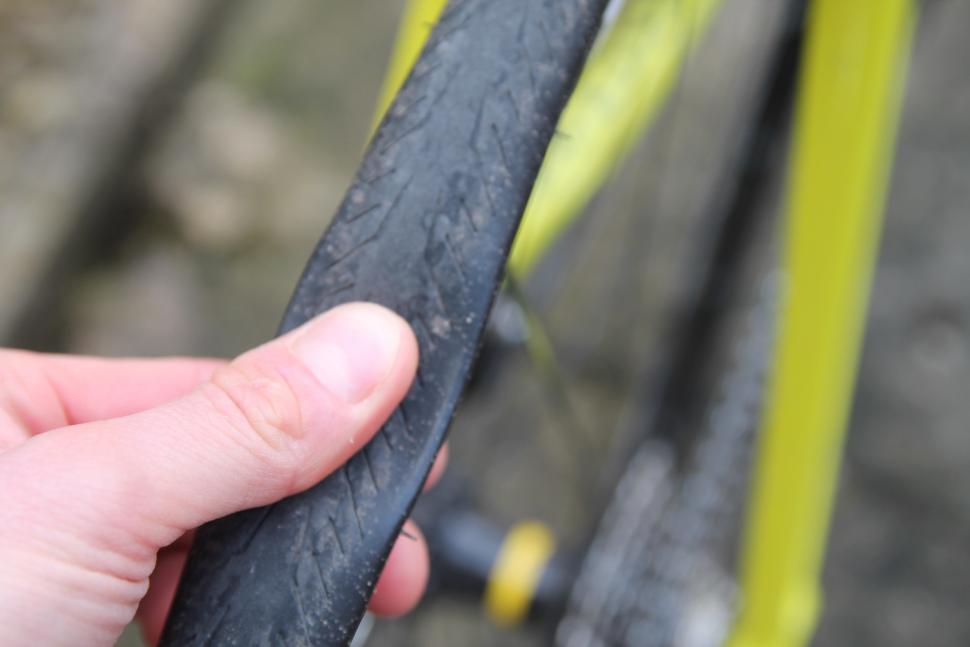
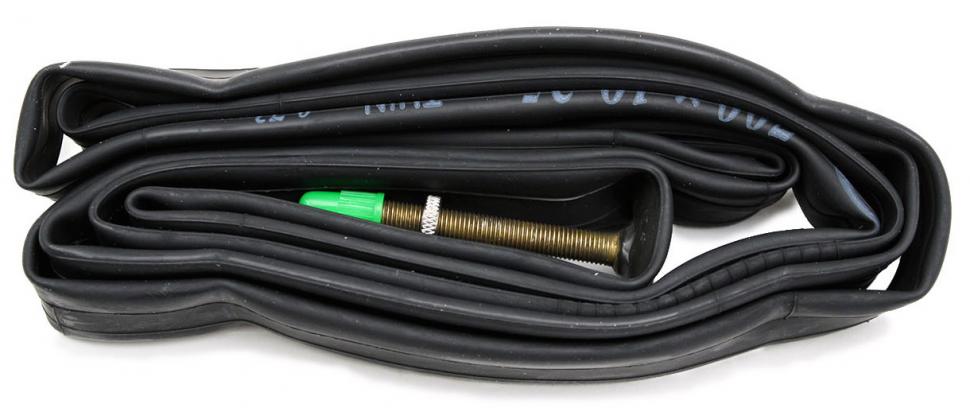
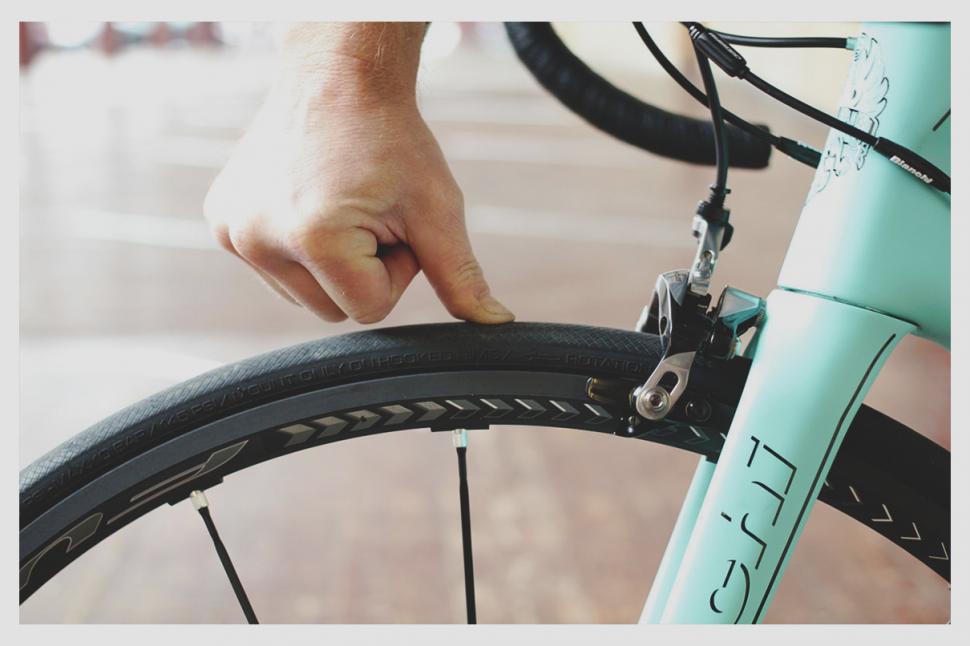


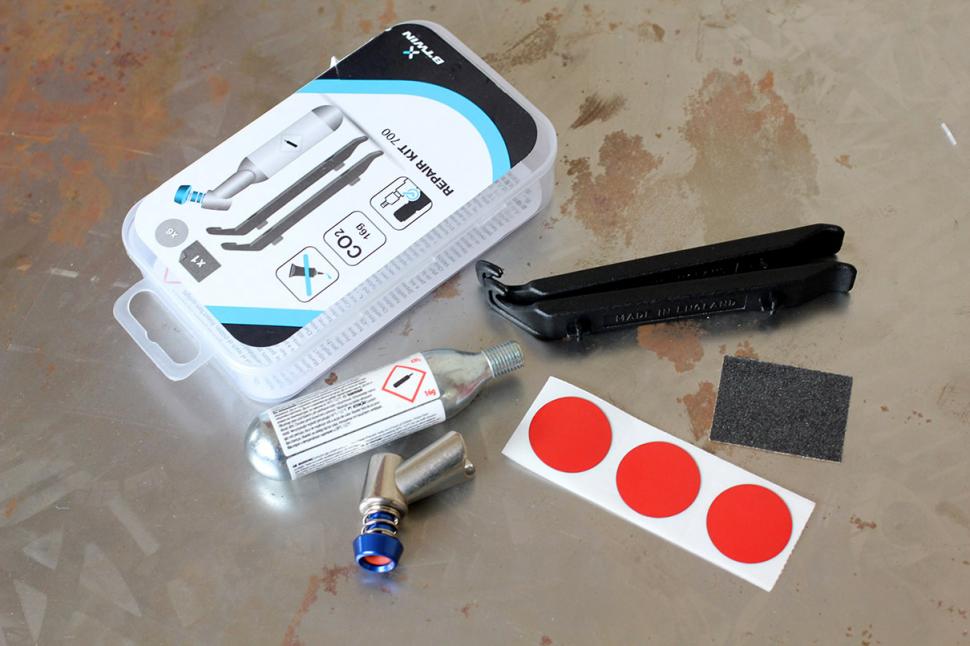
Add new comment
79 comments
Just a bit of observations.
I find that so-called puncture resistent tyres are not worth the price. Conti 4000 Sii punctured very often, replaced with Durano plus after 200 miles: two punctures on the same ride within a week of buying them, replaced with Specialized Armadillo Elite after 400 miles- better but got 3 punctures last year. I would say that on average my cheap Vittoria Zaffiro has the same number of punctures. So I'm done with the hyper expensive winter tyres. On my racer my Zaffiro Slicks haven't had one single puncture after more than 3,000 miles. So I will replace the Armadillos with Zaffiro when they're done.
Beware of cycleways and round-abouts. Most of my punctures, if not all, have happened in those places. Grit and flints are probably thrown on the cycleways by cars.
It's worth remembering that those fatter MTB and BMX tyres are a lot easier to remove from a rim too. This can save a lot of Anglo Saxon language use if you've forgotten your tyre levers.
Don't ride Italian tyres on loose chipped surfaces.... 3 punctures in the last two rides. Vittoria tyres are now where they belong - in the bin - and I'm back on Contis...
That's funny, I have the same experience. Ridden 4,000 miles on the Vittoria Slick clinchers without one puncture. All other tires I've tried have punctured, even the so-called tough winter tires.
Never mention the word, never ever discuss the last time... something, something...
I am a scientist, I am not superstitious, I do not believe in fate, but still...
And yes, I should have reread the article before commenting.
I disagree with latex tubes being much more difficult to puncture. Sure on marketing adds you will see a tube being stretched over a broken bottle and nothing happening to the tube, but that's different then being inside a tire and pumped up to 100 psi or so where the tube can't stretch when something penetrates the tire and goes into the tube. I actually had more flats using latex then I would with butyl tubes.
"How to avoid a puncture" - doesn't it involve making sure you've sacrificed the right kind of animal to the right sky fairy before you head off on your ride...?

I use super light tyres and inners . They are supposed to be very poor at stopping punctures . I find the exact opposite in reality. They roll very fast and I don't get any pinch flats at all . They are smooth as anything and the super light inner tube seems to sit in the tyre much better . I'm talking tyres around 150 grm and sub 50grm inner tubes.....works great .
I'd add, if using Mavic UST, get rid of the Yksium tyres. Effing awful. As tough as dairylea. I've had two complete flats since getting them plus numerous holes. In fact I've nearly gone through a whole bottle of sealant that was meant to last a year.
The best way to avoid punctures is to wear a new device ,I saw in Japan last year .its a pair of glasses that have a small screen that shows any potential puncture that is coming your way .
Been using tubeless for about 4 years now. First year had a flat, just one, using Schwalbe sealant. Since then have used Stans Race sealant with various tubeless tyres, mostly Schwalbe Pro One and Mavic Yksion. Haven't had a flat of any sort, or any loss of sealant or hissing, but on inspection I have had two or three punctures in about 4 years that self sealed and I new nothing about them at the time. I don't even carry any repair tools these days, just a phone, which I haven't needed to use.
I see that others have had problems with these tubeless tyres, but honestly I really would recommend Stans Race Sealant (not the ordinary Stans, which I found no better than any of the many others). I use 30ml in a 25mm tyre and check/replace the sealant every 3 months or so (I use milkit valves, so its a doddle to do that - and don't believe that Stans Race Sealant clogs milkit valves, it doesn't!).
Option not mentioned ; tyre liners. On two of my training bikes I have plastic tyre liners and very heavy 3mm walled inner tubes. NO PUNCTURES. They are harder to push so good training and not for the race / club ride bikes.
It'd be a great set up for commuters.
I used to average 1 or 2 flats a year riding a thousand miles a year over the last 30 years from broken glass, nails, thumbtacks, etc. on different road bikes, tires and tubes. I live in Arizona now where thorns from a lot of plants end up on the ground and are a common puncture problem.
I had several flats with the original tires and tubes that came on my current 2011 Specialized Roubaix, but I have not had any problems for several years since I started using Roubaix Pro tires and Performance Forte puncture resistant tubes (no longer available). They are butyl rubber, heavier and twice as thick as regular tubes. I think they have a bit more rolling resistance, but worth it to me to avoid flats. I still carry a spare tube and tools on my 20-30 mile average rides just in case.
My next tires and tubes will probably be puncture resistant Michelin or Continental. I have never tried tubeless, but my next bike will have wheels that allow them.
After getting a pinch flat hole where the tube connects the valve, I learned early on to not tighten the nut at the base of the Presta valve.
I agree with checking to make sure your rim tape is good and to dust your spare tube with talc and carry it in a plastic bag.
No mention of pinch flats, or the correct and common sense way to fit your tubes/tyres ....
Years ago when cycling to work through industrial estates in the Black Country. I was able to buy a stainless steel bent wire that rested on top of my tire and whipped off swarf and shards before it was pressed into the rubber on further rotations. I could go for months without a puncture. Are these still available?
Water running on a road turns some of the gravel and flint etc sharp side up as it comes to rest when it offers the least resistance to the flow. All the debris that had previously collected in the centre is also distributed across the area previously swept by car tyres. So pick your line carefully through the rivulets.
I once had a puncture on my turbo. That seemed particularly unfair!
Option not mentioned ; tyre liners. On two of my training bikes I have plastic tyre liners and very heavy 3mm walled inner tubes. NO PUNCTURES. They are harder to push so good training and not for the race / club ride bikes.
It'd be a great set up for commuters. [3]
Absolutely agree. And terrible in the wet, or damp, or mildly humid. I swapped to conti 5000s which were horrible to fit, but like riding on air compared to the YUKsions.
100kg rider here, and exactly the same experience since going from Stans to Stans race, no punctures for 18 months on IRC RBCC 28mm (winter) and 25mm GP5000s (summer). No milkit valves but just remove valve and top up every 4 months or so.
7 months late, but Rene Herse sell them. No idea if you can find any in the UK...
https://www.renehersecycles.com/shop/equipment/fenders/tire-wipers/
My tips;
1. Pre ride check your tyres; you would be amazed the number of flints, glass splinters and small stones that get worked into your tyres. Even if nothing but a small cut is visible at the surface, take something pointy and have a little feel in the cut.
2. Tyre pressure; I actually found out that if you run too high pressure it can make it easier for flints and splinters to cut throught (ths was on a set of Challenge Strade Bianchas). Apparently running a lower pressure lets the tyre deform rather than separating. YMMV.
3. After riding over a sketchy bit of road, run your glove / finger tips over the tread of your tyres. This brushes off the sharp stuff before it can get embedded.
4. Forget all of the above and run Anti-Platt (some random German brand - check Bike24.com) puncture resistant strips. Ive done this all year ( a little over 2000km) and no p@&*tures yet (touch wood).
Fully agree with point 2, pumping up to the max inflation pressure is bonkers. Ground pressure is force/area so decrease ground ressure and those flints aren't forced in as hard. Plus you will go faster and be more comfortable (will feel slower though).
Re: point 2, there is a company out there that sells "tyre wipers", a little wire that attaches to the front of the mudguard and is adjusted to be just clear of the tyre.
We used to make those ourselves back in the dark days before decent tyres. They're brilliant, they flip debris out after half a rotation, before it gets driven through the tyre by subsequent rotations.
5. See a tractor cutting hedges - get off and walk.
Quite a fan of slime tubes on my clinchers. I was commuting over an industrial estate and the roads were covered with a large number of pieces of metal debris. The roads around here aren't the smoothest, either. The joy of weekly punctures. Fit slime tubes and the problem clears right up. Could also be that those little green caps deter malevolent co-workers from interfering with your unattended bike, as well.
Cars never get flats because their tires don't have inner tubes. </s>
Odd observation, apart from my own experiences, my mate has just forked out £120 quid (11.8.17.) for two car tyre punctures.
New tech is great but earlier this year I had an unrepairable puncture in a tubeless tyre and a seized valve so couldn't fit a tube. This happened on the first ride home at a new job 40 miles away!
Whatever you do you cannot avoid punctures, I don't get any fewer punctures now I ride tubeless but, they either seal up or are easier to fix with a noodle than the hassle of replacing a tube. but every now and then, when you get a puncture on a tubeless set up it's a total show stopper, unless you carry a needle and some fishing line!
Its down to tools/spares you carry. I agree a bad puncture on any version of tyre setup will stop you, unless you're carrying a new tyre and/or inner tube, sealant.
Its down to percentages, real life has shown me I get far less puntures with tubeless than with inner tubes.
Pages